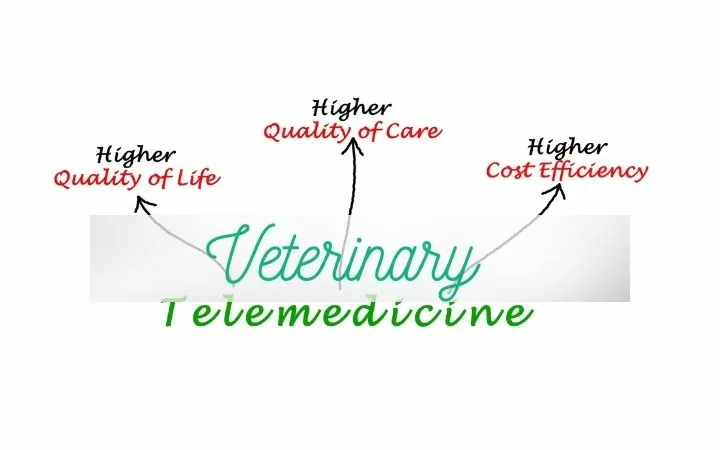What is Veterinary Telemedicine?
Technology is going forwards and with pet owners having to work long hours and not having so much time for vet visits, here comes veterinary telemedicine.
Veterinary telemedicine (VT) is veterinary medicine based on the use of digital technologies to provide medical diagnosis and other professional assistance remotely.

Veterinary telemedicine can offer a variety of services through live video conferencing, email messaging, remote monitoring, advice from experts in veterinary medicine and other specializations, etc.
An innovative app by Fuzzy Pet Health aims to help pet owners get veterinary advice and care over the internet. They created an app that connects pet owners and veterinarians in real-time on the phone. The app is available for Android and Apple users.

The idea of the app is to provide immediate access to veterinary advice by talking to real, licensed veterinarians instead of googling symptoms and panicking about what may be wrong with your pet.
The app developers are aware that not everybody can get their pet immediately to a veterinary hospital and this is a simple way to determine if non-life-threatening conditions are urgent or not. The members will be able to schedule home visits with the vets on-call and even order prescription medicine.
The Use of Veterinary Telemedicine
Using VT enables animal owners to have access to the expertise of professionals without being away from their pets. It can be particularly useful when an owner has a pet that needs urgent treatment or care yet there is no local veterinarian available to provide this care.
In such cases, a familiar face can inspire confidence in a pet’s condition and help establish a trusting relationship between staff members or outside veterinarians who may not know or understand the patient’s needs.
VT provides veterinary surgeons with new ways to reach veterinary care to animals across the globe. This is especially useful for veterinary surgeons in countries where veterinary medicine has not developed properly or is limited by government policies, financial problems, etc.
It allows veterinary hospitals and veterinary specialists to provide their services at a distance to more people who can be helped due to improved accessibility. For example, veterinary surgeons may help treat animals in remote areas that are affected by natural disasters, which veterinary services are not available due to lack of resources or expertise.
The Benefits and Limitations of Veterinary Telemedicine
Benefits
Veterinary telemedicine practices have both benefits and some limitations depending on which type of medical information they are sharing among professionals, locations, time zones differences between participants, etc., as well as veterinary surgeons’ expertise and knowledge.
Veterinary telemedicine is not only useful for veterinary patients but also for veterinary practitioners who can use it to manage cases, network with other veterinary professionals, etc., thus increasing the efficiency of veterinary practices.
Furthermore, VT allows veterinary practices to participate in regional or national veterinary associations by sharing their views on specific topics or best practices through live video conferencing. Moreover, veterinary specialists can share their perspectives about diagnostic challenges during seminars via VT conferences.
There are several types of veterinary telemedicine including consultative veterinary telemedicine (CVM), clinical veterinary telemedicine (CVT), advanced imaging-based CVT (ivideo CVT). Veterinary consultative veterinary telemedicine includes telediagnosis, veterinary specialist consultation, and veterinary instructions.
Veterinary clinical veterinary telemedicine is used in veterinary practices to overcome geographic distances between the veterinary hospital and the veterinary surgeon. iVideo CVT is based on veterinary imaging comparisons with external consultations when needed, while remote monitoring can help control complications directly through video conferencing sessions.
Limitations
When performing veterinary consultative veterinary telemedicine it is important to keep in mind that there are some limitations for this type of VT due to differences among countries regarding diagnostic standards, terminology systems (i.e veterinary Latin), etc., which can be overcome if veterinary surgeons are well-trained in veterinary telemedicine and veterinary standards of practice.
Furthermore, veterinary consultative veterinary telemedicine is not recommended for veterinary practices with less than four full-time staff members due to a lack of knowledge on how to manage patient cases from veterinary specialists along with a lack of monitoring capabilities during veterinary appointments via video conferencing sessions.
Veterinary clinical veterinary telemedicine does not have limitations as long as there is at least one veterinary surgeon working at the clinic or hospital, who has the necessary training using electronic devices to connect remotely with other professionals and keep a close watch on patient conditions.
